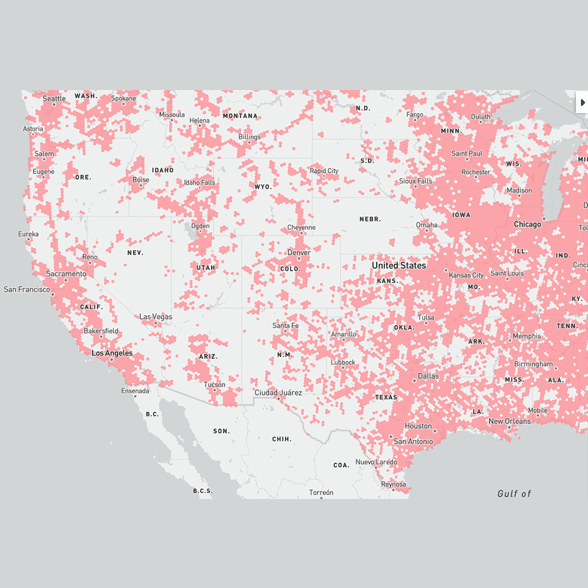The FCC still doesn’t have it right when it comes to the National Broadband Map, according to a former FCC senior official. At issue is the accuracy of the availability data reported by broadband providers. It’s an important issue, as that data determines areas eligible for the $42.5 billion BEAD program and other government funding programs.
Broadband providers are required to report broadband availability data twice yearly to the FCC. Until 2022, that data was reported by census block group. Since then, providers have been required to report it by location — a requirement that was expected to address concerns that the data overstated broadband availability.
But that assumes providers are accurately reporting availability. And in a blog post published at Medium.com, former deputy chief for the FCC Wireline Competition Bureau, Carol Mattey (now principal of Mattey Consulting), said there are two major loopholes that can enable a provider to report that it offers service more broadly or at faster speeds than it truly offers.
Keep in mind that it may benefit the provider to state that it offers service more broadly or at faster speeds than it truly does because the provider may want to make unserved or underserved areas ineligible for funding to prevent competitors from coming in.
The first loophole: Providers only have to report advertised speeds, not actual speeds.
The second loophole: Providers can report a location as served if they can provide service there within 10 days. But this doesn’t take into account the fact that if numerous households in an area all requested service, the provider likely would not be able to serve them all so quickly.
Mattey also notes that the burden of proof is on challengers in any disputes over availability, and successful challenges are difficult. The FCC doesn’t accept challenges made based on speed tests; and while NTIA is allowing such challenges for the BEAD program, a speed test can’t be conducted if no one is subscribing to the service.
There was a precedent for requiring more from providers. Mattey noted that the rules for the Connect America Fund (CAF) rural broadband program made it easier to challenge availability claims.
For that program, in order to claim an area as “served,” a provider had to:
- actually offer voice and broadband in the census block;
- have voice and broadband-capable physical assets in or adjacent to the census block; and
- already have or have previously had customers in the census block or is able to deliver service within 10 days without an extraordinary commitment of resources and without a special construction fee for customers.
Unfortunately, it’s not easy for the FCC to change the current reporting requirements for the broadband map. That would require a rulemaking that likely would take months, according to Mattey.
That means it will be up to the states to establish their own rules if they want to have an effective challenge process. Mattey urges them to consider the rules that were used for the CAF program.
She also notes that “states that have a solid factual basis for believing service is not available have the ability to ask NTIA for a waiver to allow them to consider specific locations as unserved and therefore eligible for funding.”


